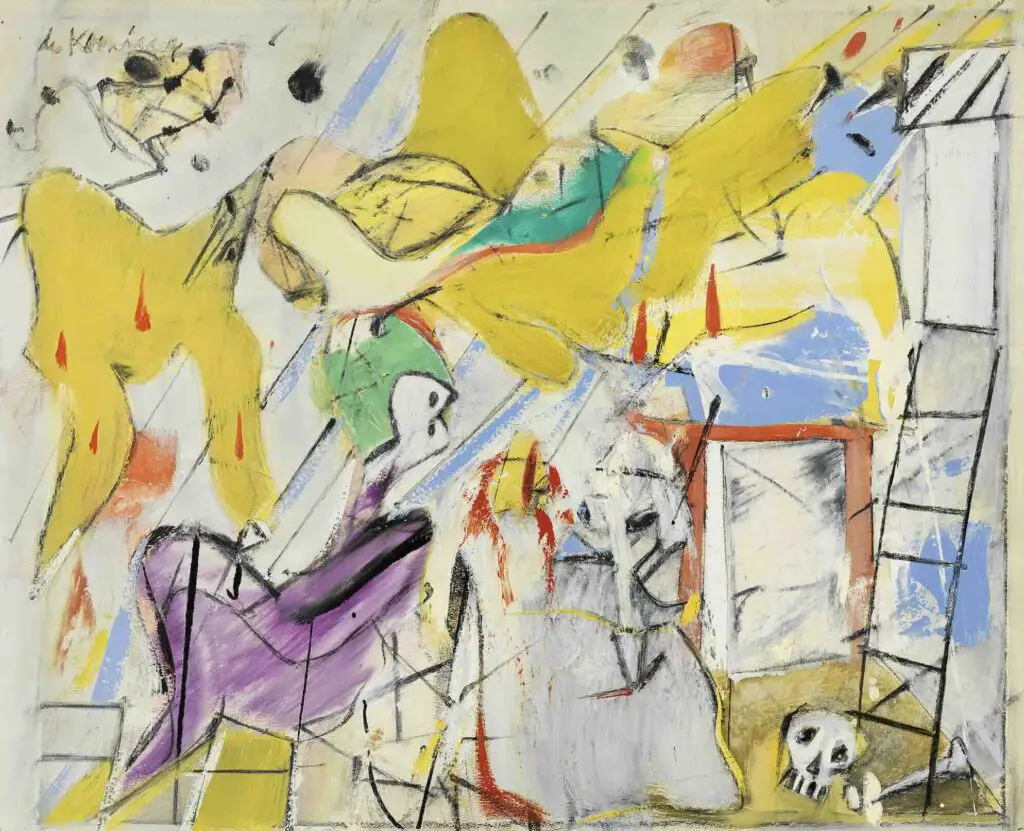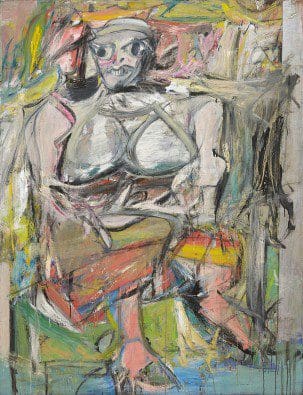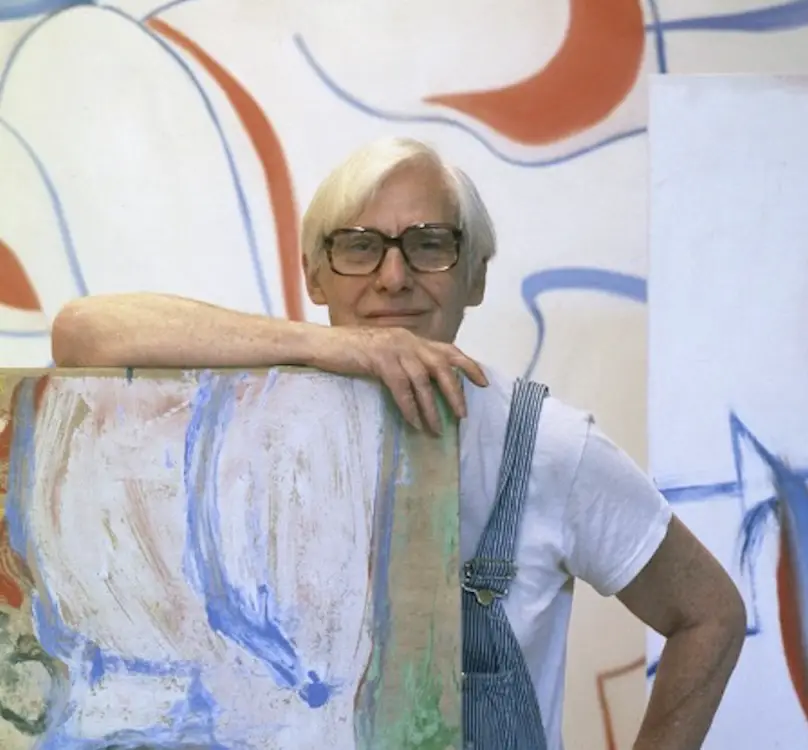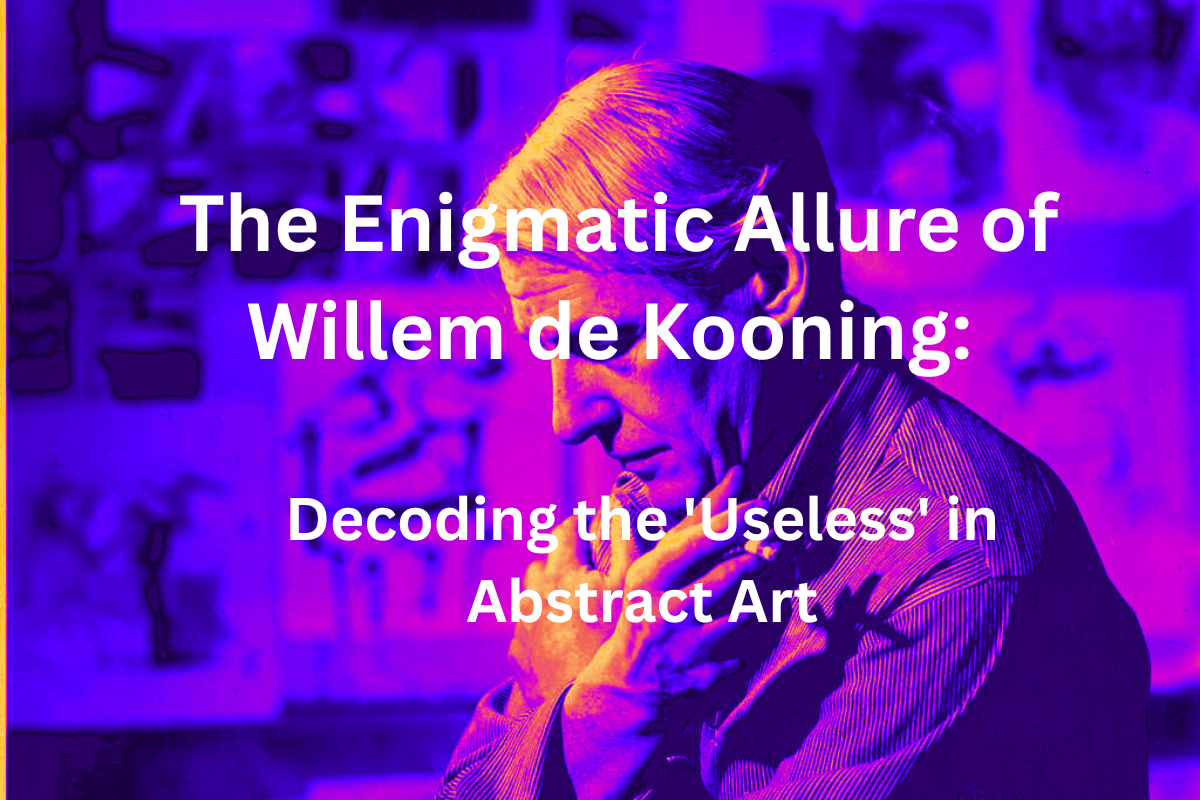Ever looked at a painting and thought, “What even IS that?” You’re not alone. Many people stare at the chaotic strokes of Willem de Kooning’s abstract masterpieces and wonder if it’s art at all. The visceral reaction often ranges from confusion to outright dismissal, with comments like, “My kid could do that!”
But what if these seemingly “useless” canvases hold a secret that could change how you perceive all art—and even beauty itself? In this exploration, we’ll delve deep into the world of de Kooning, unraveling the mysteries of his work and challenging our definitions of beauty and artistry. Prepare to have your understanding of what constitutes a masterpiece shattered as we uncover the profound significance behind the apparent chaos of abstract expressionism.
Table of Contents
- Beyond the Brushstroke: What is Abstract Expressionism?
- De Kooning’s Radical Vision: The “Woman” Series
- The Unseen Influence: De Kooning’s Legacy
- Why “Useless” Art Still Matters
- Engaging with Abstract Art
- Related Questions
Beyond the Brushstroke: What is Abstract Expressionism?
To appreciate de Kooning’s work, we must first understand the context of Abstract Expressionism, a revolutionary art movement that emerged in the mid-20th century. This movement was characterized by a rebellion against traditional artistic standards, focusing on emotional expression, spontaneity, and the creative process itself rather than a literal representation of subjects.

Key Characteristics of Abstract Expressionism
- Emotional Expression: Artists sought to convey deep feelings and personal experiences through their work.
- Spontaneity: The act of painting became a performance, emphasizing the artist’s gesture and movement.
- Process Over Product: The journey of creation was often deemed more important than the final piece, inviting viewers to engage with the artist’s experience.
De Kooning was part of a vibrant community of artists, including Jackson Pollock and Mark Rothko, each bringing their unique voice to the movement. While Pollock’s drip paintings emphasized chaos and chance,
Rothko’s color fields focused on emotional resonance through color. De Kooning’s work, particularly his “Woman” series, challenged societal norms and expectations in ways that were both shocking and transformative.
De Kooning’s Radical Vision: The “Woman” Series
One of de Kooning’s most iconic contributions to art is his “Woman” series, which sparked controversy and debate. These paintings, characterized by their aggressive brushwork and distorted figures, pushed the boundaries of how femininity and beauty were represented in art.

Challenging Societal Norms
The initial shock of the “Woman” series lies in its raw energy and psychological depth. De Kooning’s figures are not idealized; they are distorted, aggressive, and often unsettling. This departure from traditional representations of women challenges societal norms and invites viewers to question their own perceptions of beauty and femininity.
For instance, in works like Woman I, the figure is both grotesque and captivating, embodying a complex interplay of attraction and repulsion.
The vibrant colors and dynamic brushstrokes convey a sense of movement and emotion that transcends mere representation. In this way, de Kooning’s work becomes a dialogue about the nature of femininity, beauty, and the human experience.
The Unseen Influence: De Kooning’s Legacy
Willem de Kooning’s revolutionary approach to art has had a lasting impact, paving the way for subsequent movements and contemporary artists. His influence can be seen in various forms of artistic expression, from performance art to neo-expressionism and even digital art.
Impact on Contemporary Art
- Performance Art: De Kooning’s emphasis on the process of creation has inspired artists to incorporate performance into their work, blurring the lines between artist and artwork.
- Neo-Expressionism: The emotional intensity and rawness of de Kooning’s style can be seen in the works of neo-expressionist artists who followed in his footsteps.
- Digital Art: Contemporary digital artists draw upon de Kooning’s principles of spontaneity and emotional expression, utilizing technology to explore new dimensions of creativity.
Recent exhibitions and critical re-evaluations of de Kooning’s work underscore his enduring relevance. Major galleries continue to celebrate his contributions, highlighting how his spirit of experimentation remains vital in the art world.

Why “Useless” Art Still Matters
Returning to the question of “uselessness,” we can now frame it as a critical function of art: to provoke, challenge, and expand our perceptions.
De Kooning’s work isn’t about adhering to traditional standards of beauty; rather, it’s about exploring the profound human experience and the emotions that define us.
The Role of Art in Society
Art, especially abstract art, serves as a mirror reflecting the complexities of human existence. It invites us to confront discomfort, question norms, and engage with our emotions on a deeper level.
De Kooning’s seemingly chaotic canvases compel us to look beyond the surface and discover the unexpected power of abstract expressionism.
Engaging with Abstract Art
As we conclude this exploration of Willem de Kooning and his enigmatic creations, we encourage you to reconsider your relationship with abstract art. Instead of viewing it as pretentious or confusing, approach it as an opportunity for dialogue and discovery.
A Call to Action
Visit a museum, seek out abstract art, and engage with it on your own terms. Allow yourself to experience the emotions and thoughts that arise as you confront these “useless” works.
You might just find that they hold the key to understanding not only art but the beauty of the human experience itself.
In the end, de Kooning’s art challenges us to redefine our notions of beauty, complexity, and meaning. Embrace the chaos, and you may uncover the profound truths hidden within.
Deep Dive Podcast
Join our Deep Dive Podcast to discover more about De Kooning and his art.
Anita Louise Art is dedicated to art education, great artists, and inspiring others to find and create their art. We love art that uplifts and inspires. #ArtToMakeYouSmile! #ArtToMakeYouHappy!
If you are interested to see any of my art, you can find out more by clicking here. If you are interested in what inspires me and my paintings, you can discover more by clicking here.
We have a free newsletter and would love you to be part of our community; you can subscribe to the newsletter by clicking here. I would be happy to talk to you if you have any questions. You can reach me, Anita, by clicking here.
Subscribe to our Anita Louise Art YouTube Channel with great videos and information by clicking here.
Join us for our podcast “5 Minutes With Art.” Spend just 5 minutes a week with us to discover and learn about great art and artists. You can find out more about our podcast by clicking here.
Related Questions
Why Are Mark Rothko’s Paintings Considered Special?
Mark Rothko’s paintings are remarkable because they are original works of art. He is one of the founders of the abstract expressionism movement and color field painting. But more than that, he believed that his spirit lives within the art and that we, the individuals, ca we view his art, can be taken to a different realm.
By clicking here, you can learn more by reading Why Are Mark Rothko’s Paintings Considered Special?.
Who is the American Artist Jackson Pollock (1912-1956)?
Jackson Pollock is considered by some to be one of the most brilliant American abstract artists that ever lived. Others consider his work of art as tossing around cans of paint by an artistic madman. One thing for certain is that Jackson Pollock is an important American abstract artist.
You can learn more by reading the blog Who is the American Artist Jackson Pollock (1912-1956)? by clicking here.

